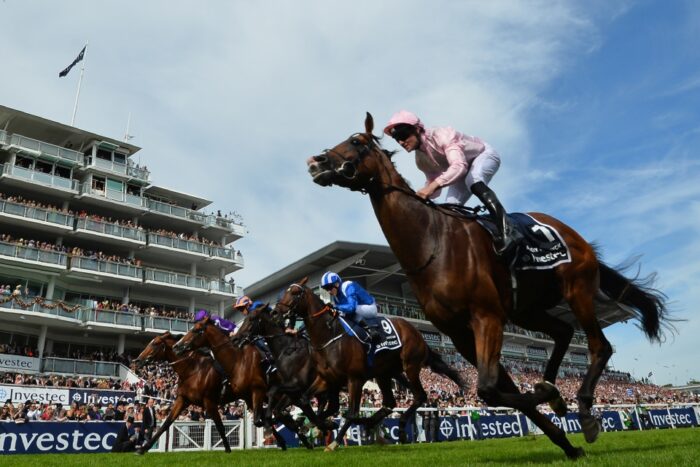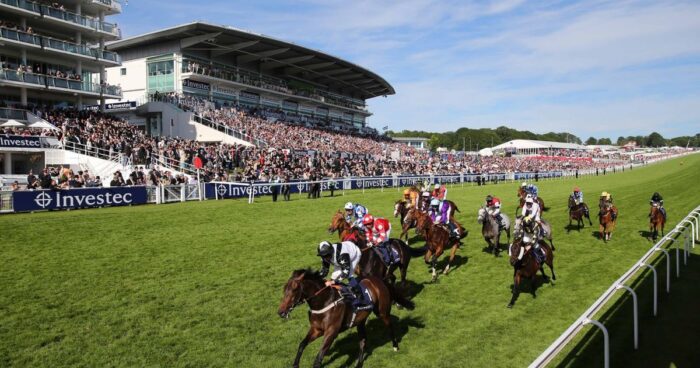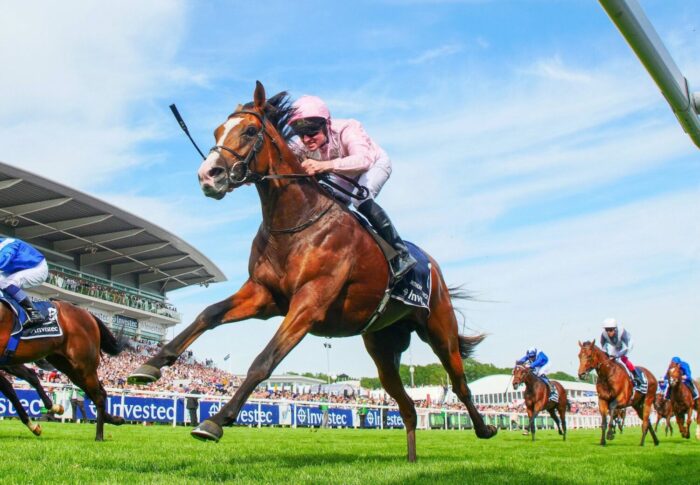If you’re a flat racing fan, we’re approaching what must surely be one of your favourite times of the year. Royal Ascot is just around the corner. But before that, there’s a flat racing meeting that’s just as exciting – Epsom Derby Day.
Whether you’re familiar with the race or have never had much interest in betting on it, there’s plenty of fascinating history to discover about this memorable event.
Modern Day

Source: talksport.com
First, we’ll look at how the Epsom Derby is here in the modern-day.
While the Cheltenham Festival is home to jump racing’s richest races, the Epsom Derby takes the title of British flat racing’s richest race. The prize fund stands at £1.125 million, with £637,998 going to the winning horse.
The race is open to three-year-old colts and fillies and is run over a distance of one mile and four furlongs.
The day is well attended, with around 36,000 ticket holders usually present and (obviously) far more watching at home. In fact, it was the first televised outdoor sporting event in the world – showing how important television audiences still are to this race.
It’s common for people to place bets on their top horses in the race, with Desert Crown being the current favourite. There are regular betting offers available during the Epsom festival, which you can find more information on here. As well to free bets, there are extra places, deposit bonuses and money-back guarantees if your horse loses.
The Early Days
The first-ever Epsom Derby was run on Thursday 4th May 1780. It was named after James Stanley, the 7th Earl of Derby. The debut Epsom Derby was won by Diomed, a colt owned by one of the Earl’s personal guests, Sir Charles Bunbury (after whom the Bunbury Cup in Newmarket was named).
Initially, the race was run over a mile, but after four years of running, it was increased to the 1m4f that it remains to this day.
To begin with, the date that the Derby ran on was governed by when Easter fell. It would either be run in late May or early June, but always on a Thursday. In the early 1800s, it was moved to the first Wednesday in June to coincide better with train timetables, allowing more spectators to view.
Excluding wartime years, the Derby was run on Wednesdays right up until 1995, when it was moved to the first Saturday in June. The move meant that people following typical work schedules could watch this important race.
The Derby’s Influence

Source: theatretripskent.co.uk
The word derby has come to be known as a synonym for a race. However, the Epsom Derby was the original and was itself named after the Earl. Several race organisers have since copied the name and used it for their own. The famous Kentucky Derby, Irish Derby, Deutsches Derby and several other races around the world have all been inspired in name by the Epsom Derby. Winning this race has huge implications for a horse, especially if they also manage to win the 2000 Guineas before it and the St. Leger after. Together, these three races make up what is known as the Triple Crown – a significant achievement for any horse. Nowadays, it is very unusual for horses to enter all three races, partly because of the changes in attitude towards three-year-old racing.
Despite this, Camelot tried and almost succeeded in 2012, when he was first in both the 2000 Guineas and the Epsom Derby. Going into the St. Leger, he was the favourite to win but got pipped to the post by Encke.
The Biggest Derby Surprises
One of the reasons the Derby is such a beloved race is because sometimes, there’s a surprise winner. In recent years, the biggest surprise came in 2018, when the totally unfancied Adayar came home at 16-1 to win for Charlie Appleby.
Appleby was naturally thrilled, but so too was winning jockey Adam Kirby – Kirby had lost his original ride on the heavily-fancied John Leeper to Frankie Dettori.
Kirby had a great ride on Adayar; seeing a gap on the inside rail as they turned into the back straight, he went for it. He snuck past the opposition to win for the Appleby yard.
This Year?

Source: coolmore.com
Watching the Derby is always exciting. This year, it’s already shaping up to be an incredibly close race. Two horses stand out particularly against the rest of the field, Desert Crown and Stone Age.
Desert Crown is a 3-year-old bay colt, owned by Sir Michael Stout. He has raced just twice before, winning his maiden appearance as a 2-year-old by five and a half lengths. Desert Crown’s only appearance of the year thus far was in the Al Basti Equiworld Dubai Dante Stakes, a Group 2 race held at York.
It was his performance in this past race in particular that cemented his position as the Derby favourite. Leading from 2 furlongs out, he ended up winning by a remarkable five and a half lengths.
Desert Crown’s stiffest competition will be Stone Age, a more heavily raced colt who appeared six times in his 2-year-old season (and twice so far this year). His first appearance of the year was in a good quality maiden race – which he won by an incredible nine lengths – and his second was in the Derby trial. As the name suggests, the Derby trial is typically a good indication of which horse might win the Derby. Not only did win it, but he also did so in superb style, leaving second-place Glory Daze five and a half lengths behind him.
Outside of these two horses, bookmakers can’t picture any other horse winning. It will be interesting to see which of these bay boys will return home victorious.
Even more interesting will be watching the ‘Royal Surprise’ that the Royal family have in store to celebrate Queen Elizabeth’s Platinum Jubilee. The Epsom Derby is one of the Queen’s very favourite sporting events; special precautions have been taken to ensure that she can attend in comfort and style.
